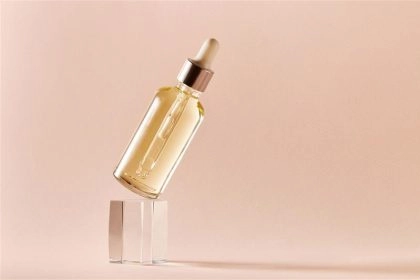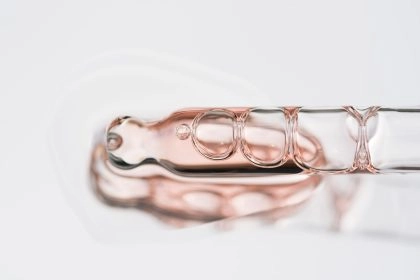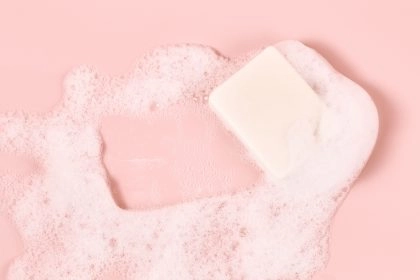The IFRA Standards and usage levels
Like other ingredients, fragrances in cosmetics must meet safety standards. This requirement is essential to protect consumers and to maintain the reputation and responsibility of manufacturers and distributors. The International Fragrance Association (IFRA) has an important role to play in this regulatory process. It provides guidance on manufacturing practices and the use of fragrance ingredients, and sets strict standards for the fragrance industry.
Here is what you need to know about IFRA and its standards.

What is the International Fragrance Association?
Introduction to IFRA
The International Fragrance Association (IFRA) is a worldwide organization that represents the interests of the fragrance industry. Founded in 1973, IFRA’s primary mission is the promotion of the safety of fragrance ingredients for use in cosmetic products. It ensures that these ingredients are safe for consumers and that they are environmentally friendly.
IFRA's role in the fragrance industry
IFRA regulates the fragrance industry in a rigorous and transparent manner with the following main objectives:
- Ensuring product safety: IFRA develops and regularly updates safety standards on the basis of scientific research and risk assessments. These standards aim to prevent any adverse effects on consumer health.
- Promoting good practices: IFRA promotes the adoption of good manufacturing practices and the management of fragrance ingredients to ensure the quality and safety of finished products.
- Facilitating innovation: By providing a clear regulatory framework, IFRA enables companies to continue to innovate while maintaining high safety standards. This helps to develop new fragrances that meet consumer and regulatory expectations.
- Transparency and Communication: IFRA is committed to transparent communication with regulators, manufacturers, national associations and consumers. This helps to harmonize safety standards globally and facilitates their implementation.
IFRA Standards
What are IFRA Standards?
IFRA Standards are a set of guidelines and regulations which define the conditions for using fragrance ingredients, including restricting maximum allowable concentrations and, in some cases, banning certain ingredients. These standards ensure the safety of the ingredients by minimizing the risk of any adverse effects on the end user and by limiting the exposure to potentially harmful substances.
Process for Updating IFRA Standards
IFRA Standards are not static. They are constantly evolving to ensure consumer protection and regulatory compliance for fragrance manufacturers.
They are updated every two years, taking into account the latest scientific knowledge, technological advances and industry feedback. The current version of the IFRA Standards, known as the “51st Amendment”, was updated in June 2023.
In addition, IFRA may issue amendments and addenda to address urgent safety concerns or to take account of significant scientific discoveries.
Categorization of IFRA Standards
IFRA Standards are organized in different categories:
Category 1 / Products applied to the lips: These products are subject to strict restrictions due to the direct contact they have with the mouth.
Category 2 / Products applied to the armpits: Specific standards are applied because the skin under the armpits is particularly sensitive.
Category 3 / Products applied to the body and hair: Restrictions vary according to the type of product and the method by which it is applied.
Category 4 / Products applied to the hands: Standards are adjusted based on frequency of application and area of contact.
Category 5 / Products applied to the face and neck: Specific restrictions apply due to the sensitivity of facial skin.
Category 6 / Products applied to the nails: These products have specific standards related to their use on a limited area.
Category 7 / Hair care products: Specific standards are applied due to the prolonged period of contact with the scalp.
Category 8 / Products not applied to the skin: Restrictions mainly concern the inhalation of volatile substances (e.g. for air fresheners, scented candles, etc.).
The categorization of the IFRA Standards allows for the precise and appropriate regulation of fragrance ingredients on the basis of their application and use. Each product category is governed by specific IFRA standards that specify the maximum usage levels for each ingredient.
IFRA Maximum Usage Level
Definition of Maximum Usage Levels
The Maximum Usage Level, as defined by IFRA standards, refers to the highest concentration of a fragrance ingredient that can be safely used in a cosmetic or perfumed product. IFRA uses a rigorous scientific methodology to determine maximum usable levels:
- Toxicological Assessments: Ingredients undergo toxicological tests to assess their safety. These tests examine potential health effects at various concentrations.
- Clinical and epidemiological studies: IFRA analyzes data from clinical and epidemiological studies to determine the effects on consumers under real-world conditions of use.
- Exposure models: Exposure models are used to estimate the amount of the ingredient to which consumers are exposed during normal product use.
- Safety factors: IFRA applies additional safety factors to account for individual variability and scientific uncertainty. These factors ensure an adequate margin of safety for all consumers, including those who may be more sensitive.
Importance of maximum use levels
IFRA’s maximum usage levels have a capital role in the prevention of health risks to consumers. By limiting the concentration of potentially hazardous ingredients, these standards help to minimize adverse effects such as allergic reactions, skin irritation, systemic toxicity (e.g. effects on internal organs or biological systems) and other adverse health effects.
Maximum use levels have also a direct impact on the formulation of fragrance products. Formulators must take these restrictions into account when developing new products. They must ensure that they are both safe and compliant with IFRA standards.
Compliance and Enforcement
Companies in the fragrance industry must be in compliance with IFRA regulations. Failure to comply can result in regulatory penalties, reputational damage and costly litigation. Non-compliant products may require reformulation, recalls, and production delays. These can result in additional costs and operational disruptions.
To ensure compliance, companies adapt formulations to IFRA standards, maintain rigorous and detailed documentation with current IFRA Certificates of Conformity, and test and validate all fragrances, including perfume concentrates, flavors and essential oils of their products.
Note that IFRA standards do not replace national regulations and safety assessments. In Europe, there may be differences between IFRA standards and the Cosmetics Regulation EC No. 1223/2009. Make sure you comply with both.





